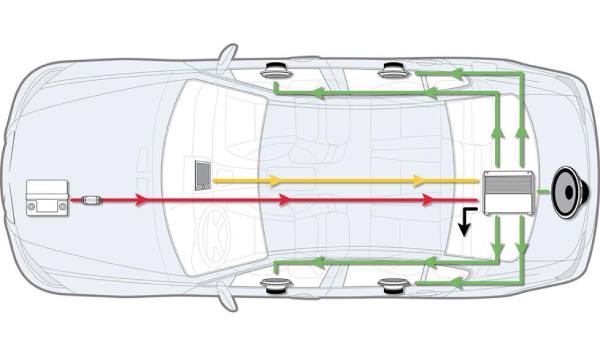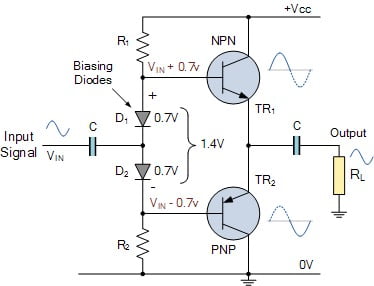Car Amplifier – Purpose, Working And Types
Have you just installed a new speaker and subwoofer in the car audio system? Since then, are you wondering what’s going wrong with the setup? After installing all these things, why is the system not sounding the way you want?
Don’t get upset. There is no problem with the subwoofer, rather the entire sound system you have. You just missed installing a compatible amplifier, so you’re not getting the most out of your audio system.
Whether a high-powered unit or weak, every car audio system requires a simple upgrade with an amplifier meant for car installation. Now, you must have become super curious to know what a car amplifier does, how it works, and much more! Don’t worry!

You’ll come to everything that you need to know regarding car amplifiers by the end of this article. So, stay tuned till the end, instead of wandering around the internet.
What Was The Purpose Of A Car Amplifier?
Sometimes you may have observed that distortion starts increasing with volume. An amplifier lets you achieve your desired volume without distortion.
Actually, the car stereo systems often come in a basic design cheaper by featuring components than a house audio system; that includes such limitations. For instance, you may have noticed most available car audio systems are rated at 15 to 18 watts power ratings; as a result, their sound starts distorting badly at maximum power output.

Likewise, the car subwoofers require ample power for powerful bass, but a car stereo system can’t provide the required power alone.
Another problem could arise when you upgrade the audio system by installing a 4-ohm speaker for maximum performance; that also requires more power than the standard 2Ω speakers.
Besides solving such issues, the external amplifiers ensure the best quality sound by improving reproduction fidelity.
Amplifier Power Ratings
The power rating is the key specification, which you need to check out first in a car amplifier to define whether it will work with your system or not? You will notice that two types of power ratings (Continuous Power and Peak Power) are mentioned in the specification section of your chosen amplifier.
The peak power specifies the maximum power handling capacity, whereas the rated power or continuous RMS power technically tells you – how powerful the amplifier is.
Suppose an amplifier is rated at 1-channel 500 watts RMS into 2 ohms. It means the amplifier will deliver 500 watts into a 2-ohm speaker.
How Does A Car Amp Amplifies The Poor Input Signal?
The amplifiers generate a higher output voltage from a standard 12-volt power source through an internal power supply unit. In most cases, an amplifier creates a direct ground wire connection with the vehicle battery and metal chassis using a thick gauge power wire.
The car stereo system sends the audio signal to the amplifier through an RCA cable or other wire connection; then, the amp strengthens the weak audio signal and delivers the boosted electrical signal to the terminals of speakers and subwoofers.

It’s the basics. If you wish to learn the working procedure thoroughly, keep scrolling to the end of this part.
Most power amps for car comes with the following features –
- A DC-DC power supply switching unit
- The ground loop circuit noise prevention unit
- Speaker crossover and bridging circuitry
- A few extra functions, like bass boost, controls for speaker-level input, etc.
How Car Power Supply Unit Work In Car Audio Systems Work?
Most car audio systems come equipped with only a +12 volt power supply unit, so creating a large power output using this unit isn’t as easy as it looks.
The car amps work based on Ohm’s law. Either it increases the voltage or decreases the resistance of the load (speaker impedance). The switch-mode power supply (SMPS) sometimes increases the +12V battery supply up to 28 volts or 32 volts, including positive and negative polarity.
The switching IC chip (integrated circuit) connects the high-current transistors to a transformer; that produces higher voltage output based on the presence of copper wire on it. Such a DC-DC switching unit could multiply a lower voltage several times to create a stabilized power source for the speakers.
The unit also has some safety features, like – a high-power switching transistor; that prevents the excess heat from destroying the unit by properly dissipating it.
How To Switch The Car Amplifier
Most amps come with a remote wire; that automatically turns off the amplifier when not in use and prevents battery drain. When we remove the +12V signal, it automatically stops drawing and battery power and turns off the amplifier.
How Do Car Amps Input Stages, Amplifier Sections, And Output Stages Work?

Input stages
Input stages of operation amplifiers come featured with some versatile amp circuits and miniature chips; that handle a range of audio functions. The input stages carry out multiple jobs, such as –
- First and foremost, if any speaker doesn’t have an RCA unit, the speaker-level input of this input stage allows you to connect the amplifier to the car stereo system.
- Next, it comes to noise prevention. The ground loop noise can’t trespass into the signal path.
- Enable various crossover functions
- Let’s you adjust the amp’s gain level.
Noise Prevention
Ground loop noise is the most frustrating problem for car audio units. A low-level electric noise gets into the signal path and keeps increasing or decreasing with the engine speed. When 2 or more points have a small voltage difference, such noise appears as an annoying high-pitched whine sound.
The car amplifiers incorporate a filter (differential amplifier circuit) on the input stage area; that effectively blocks and cancels out the noise signal before entering the signal path.
Crossovers
The electronic crossover unit allows you to control the frequency range. For instance, a low pass filter function blocks everything except the low frequency to ensure great bass sound. Likewise, the high pass crossover function lets you block the mid and bass frequencies to guard smaller tweeter speakers and ensure distortion-free high frequencies sound.
You could enhance the longevity and performance of your speakers by using correct crossover and ensuring better sound clarity and more volume.
Amplifier Gain
The car stereo systems don’t offer standard output voltage, so having a proper gain adjustment feature is necessary to prevent distortion and ensure sufficient power and the best sound quality.
The gain control adjustment features let you control the output signal according to the input level. It’s a great way to match output level and volume, and reduce noise, as well. If the installed amp includes a minimal noise (sounds like a ‘hiss’ or similar), you could reduce the produced noise level by lowering the gain level.
Amplifier Sections And Output Stages
The audio amp channel section manipulates and modifies the audio signals. First, the audio signal gets divided into two halves; then, it passes through the stages and various crossover filters towards the large high current transistor; placed on the output stage. The input signal gets magnified and turned into a larger waveform; connected to the speaker outputs.
Types Of Car Amplifier
At the basic level, the power amplifiers are classified into two types – analog and switching. After that, these two basic types are further categorized into more than a dozen classes, though only four amplifier classes (A, B, AB, and D) are available for car audio systems.
Class A Car Amplifiers

Class A amplifiers come with a basic design by including internal circuitry, which keeps it always powered on. A-rated amps are great for audiophile sound quality, but the big size creates problems for the car audio system.
- Pros: High fidelity sound, low distortion, and superb clarity.
- Cons: Large and Creates a lot of heat.
Class B Car Amplifiers

Class B amps are equipped with a switching function; that powers them off when there is no audio signal to amplify. Due to its smaller size, it could work for a car stereo system, but lower audio quality is the reason to say it is a big ‘NO.’
- Pros: Efficiently amplifies the audio signal and creates less heat than Class A amps.
- Cons: Lower audio fidelity and include signal distortion.
Class A/B Car Amplifiers

Class A/B amps are the famous amplifiers till now; because of their good sound quality at a reasonable cost. Basically, it’s a hybrid version of traditional class A and class B amps but highly efficient compared to both. The full-range car amps generally use this AB class.
- Pros: More efficient in terms of audio fidelity and clarity than class A and include less distortion than class B.
- Cons: More distortion than class A.
Class D Car Amplifiers

Class D amps are coming into the trend due to advanced switching technology. The latest power On / Off circuitry prevents power waste and excess heat production.
The switching function includes a minimal distortion at the higher frequencies, but it gets removed by the low-pass filter. Regarding car audio systems, the class D amps could get a big thumbs up for their size, power efficiency, and sound quality.
- Pros: Most efficient.
- Cons: Add distortion at high frequencies.
Most Popular Car Amplifier Types
Class A/B and D amps are most commonly used in car audio amplifiers. Some variations have been launched into the market to eliminate the shortcomings of D and A/B classes. For instance, you can take the BD class amps, which offer less distortion at high frequencies.
Which Amplifier Class Should You Choose?
Choosing the right class is more complicated than the feeling; you may have just felt while trying to understand how an amplifier works. Without complicating it more, I would like to suggest class D amplifiers for subwoofers and the A/B amps to those; who just want a good sound.
You Can Also Make Car Speakers Louder Without An Amplifier?
- Install the Best Tweeters
- Install both Full-range and mid-range subwoofers
- Role of Crossover and Phase
- Soundproof your car
- Damping your car doors, for more details check this how to make car speakers louder without amp article.
Conclusion
Be it a car or home audio system; a quality amplifier only could ensure loud and distortion-free sound all the time. By now, I think you have started to agree with me. However, I’ve tried to cover all necessary points associated with amplifiers for high-performance car audio systems. If you have any confusion or queries, feel free to comment below.
RELATED POSTS:
